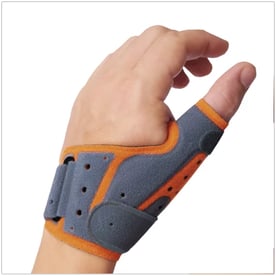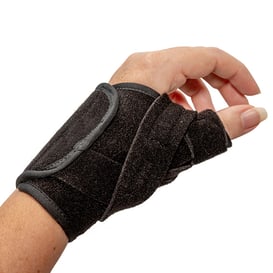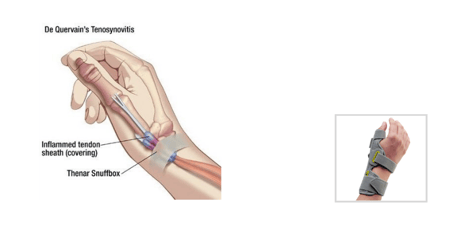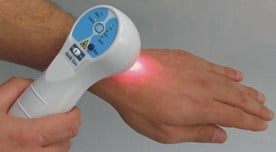Summer is here and working in the gardens and flower beds and pulling up the weeds is in full swing. This work may help the landscaping look beautiful, but for those with osteoarthritis at the base of the thumb, the force from pinching and pulling at the weeds can leave thumbs hurting. While textbooks and older research studies discuss using an orthosis, paraffin, gentle AROM, and joint protection techniques to address the pain and limited function associated with trapeziometacarpal arthritis (TMC), more recent studies highlight the potential benefit of stabilization and proprioceptive exercises for this diagnosis.
Stabilization Exercises
Radial subluxation and instability are believed to contribute to pain and symptoms associated with arthritis at the TMC joint. A recent retrospective study found reduced pain and improved function for individuals with TMC joint arthritis when a stability program involving first dorsal interosseus (FDI) strengthening was a component of their therapy program. In addition, a biomechanical study has shown reduced radial subluxation with contraction of the FDI. The FDI and the opponens pollicis (OP) are thought to reduce symptoms because they work to resist the radial subluxing force of the adductor pollicis, which is problematic and occurs with TMC joint arthritis.
The FDI can be strengthened using an isometric exercise for abduction of the index digit. OP can be strengthened using a gentle isometric contraction for opposition, one intended to contract OP without transmitting force through the TMC joint.
Proprioceptive Exercises
Poor proprioception and neuromuscular control is believed to contribute to TMC arthritis. Studies have found that individuals with hand osteoarthritis use unnecessary grip force and require increased time to manipulate objects suggestive of decreased sensory information in the hand. In addition, recent biomechanical analyses of the TMC joint have demonstrated that this joint’s ligaments are important contributors to neuromuscular stability via their actions of signaling joint motion and position.
Related to this, it is suggested that proprioceptive testing (i.e. joint position sense test) be performed with individuals with TMC arthritis. As appropriate, therapeutic intervention should address neuromuscular control and proprioceptive sense of the thumb. Ideas for sensorimotor and proprioceptive activities for these concerns include picking up objects with chopsticks, finding objects such as beans and marbles hidden in putty or rice, sorting coins, puzzle pieces, shapes, or weighted plastic eggs, and clay or lego modeling following a specific design.
The Tried and True
Using an orthosis to decrease pain and increase function for an individual with TMC arthritis has been found to be effective in research and has been commonly used as a conservative treatment for many years. While using an orthosis is not a new option, the Fix Comfort Thumb Brace provides firm, customizable thumb support without limiting finger or thumb IP motion.
The 3pp Prima Thumb Brace offers optimal support with a fully adjustable, non-slip strapping system, memory-stretch material and a removable dorsal stay.
Blog References: For more information on this topic, click to see the references for this blog post






